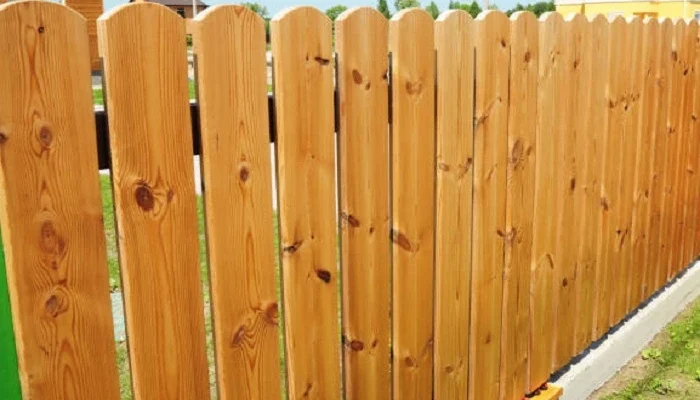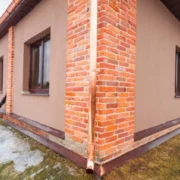Wooden fences add warmth, beauty, and character to outdoor spaces, but exposure to the elements can cause them to fade and discolor over time. Sunlight, moisture, and temperature fluctuations gradually break down the wood’s natural color and strength. Without proper care, a once-vibrant wooden fence can turn gray, warp, or even develop mold and mildew.
Preventing fading and discoloration requires a combination of protective treatments, routine maintenance, and smart landscaping choices. We will explore effective methods to keep wooden fences fresh and well-maintained for years while preserving their natural beauty and durability. Get in touch with a wooden fence company near you.
Choosing the Right Wood and Initial Treatment
The type of wood used for a fence plays a significant role in its longevity and resistance to fading. Hardwoods such as cedar, redwood, and teak naturally contain oils that help them withstand harsh weather conditions better than softwoods like pine or spruce. Pressure-treated wood is another option, as it is chemically treated to resist rot and insect damage. However, applying a protective sealant or stain immediately after installation is crucial regardless of the wood type. A high-quality, UV-resistant stain or sealant helps block harmful sun rays that cause fading while preventing water absorption that leads to discoloration.
When selecting a stain or sealant, consider whether you prefer a transparent, semi-transparent, or solid stain. Transparent finishes allow the wood’s natural grain to show through, while semi-transparent and solid stains offer increased pigment protection against UV rays. Water-repellent preservatives containing fungicides can help prevent mold and mildew, contributing to discoloration. Properly treating the wood before exposure to the elements ensures a strong foundation for long-term color retention. Additionally, allowing newly installed wood to dry for a few weeks before staining ensures better absorption and adhesion, leading to a more effective and lasting treatment.
Regular Cleaning and Maintenance
Keeping a wooden fence clean is one of the most effective ways to prevent discoloration. Over time, dirt, mold, mildew, and algae can accumulate, causing the fence to appear dull or stained. Regular cleaning helps maintain the fence’s natural color and prevents premature aging. A gentle mixture of water, mild soap, and a soft-bristle brush or sponge is usually sufficient to remove surface grime. For tougher stains, a solution of water and white vinegar can help eliminate mildew without damaging the wood.
Pressure washing can also be effective but should be done cautiously. Too much pressure can strip away protective coatings and damage the wood fibers, making the fence more susceptible to fading. Setting the pressure to a moderate level and keeping the nozzle at a slight distance prevents unnecessary wear. After cleaning, applying a fresh coat of sealant or stain ensures continued protection. Routine maintenance, such as checking for loose or damaged boards and making necessary repairs, prevents further deterioration and keeps the fence looking its best.
Protecting Against Sun Damage
Sun exposure is one of the biggest contributors to wood fading. Ultraviolet (UV) rays break down the wood’s natural fibers, leading to a gray and weathered appearance. Applying a UV-protective stain or sealant is the most effective way to combat this issue. Stains with built-in UV inhibitors reflect sunlight, reducing the damage the wood absorbs. Reapplying the stain every two to three years keeps the protection intact and helps maintain the fence’s color.
Another way to minimize sun damage is through strategic landscaping. Planting trees, shrubs, or tall plants near the fence can provide shade and reduce the direct impact of sunlight. Climbing vines and trellises can also create a protective barrier. However, leaving enough space between vegetation and the fence is essential to allow for proper air circulation, preventing moisture buildup that could lead to mold or rot. Wooden fences can retain their color and strength by combining protective coatings with smart landscaping for much longer.
Preventing Moisture-Related Discoloration
Excess moisture can significantly discolor and damage wooden fences. When wood absorbs too much water, it becomes a breeding ground for mold, mildew, and algae, leading to unsightly stains and structural deterioration. Proper drainage around the fence is crucial to prevent this. Avoid allowing soil or mulch to come into direct contact with the wood, as this traps moisture and accelerates decay. Instead, maintaining a small gap between the ground and the fence helps keep the base dry.
Sealing the wood with a water-repellent finish is another effective way to minimize moisture-related issues. These finishes create a barrier preventing excessive water absorption while allowing the wood to breathe. If the fence is exposed to heavy rainfall, positioning it to allow for faster drying, such as ensuring proper spacing between slats, can reduce the risk of prolonged dampness. Regularly checking for signs of mold or mildew and addressing them promptly keeps the wood in good condition and prevents stains from setting in.
Seasonal Fence Care and Weather Protection
Different seasons bring different challenges for wooden fences. Summer’s intense sunlight can fade wood, while winter’s cold temperatures and moisture can cause warping and cracking. Adapting maintenance routines to each season ensures year-round protection. Applying a fresh coat of stain or sealant during spring and summer provides an extra layer of defense against UV rays and rain. In the fall, clearing leaves and debris from around the fence prevents moisture retention, which can lead to mold growth.
Maintaining the color and appearance of a wooden fence requires a combination of protective treatments, regular maintenance, and strategic landscaping. Choosing the right wood, applying a high-quality stain or sealant, and keeping the fence clean all prevent fading and discoloration. Protecting against sun damage, minimizing moisture exposure, and adapting maintenance routines to different seasons ensure long-term durability. Avoiding harsh chemicals and using proper cleaning techniques extend the fence’s lifespan. By taking these proactive steps, homeowners can keep their wooden fences looking vibrant and well-maintained, preserving their natural beauty for years.
Choice Home Warranty George Foreman in 2024










Comments